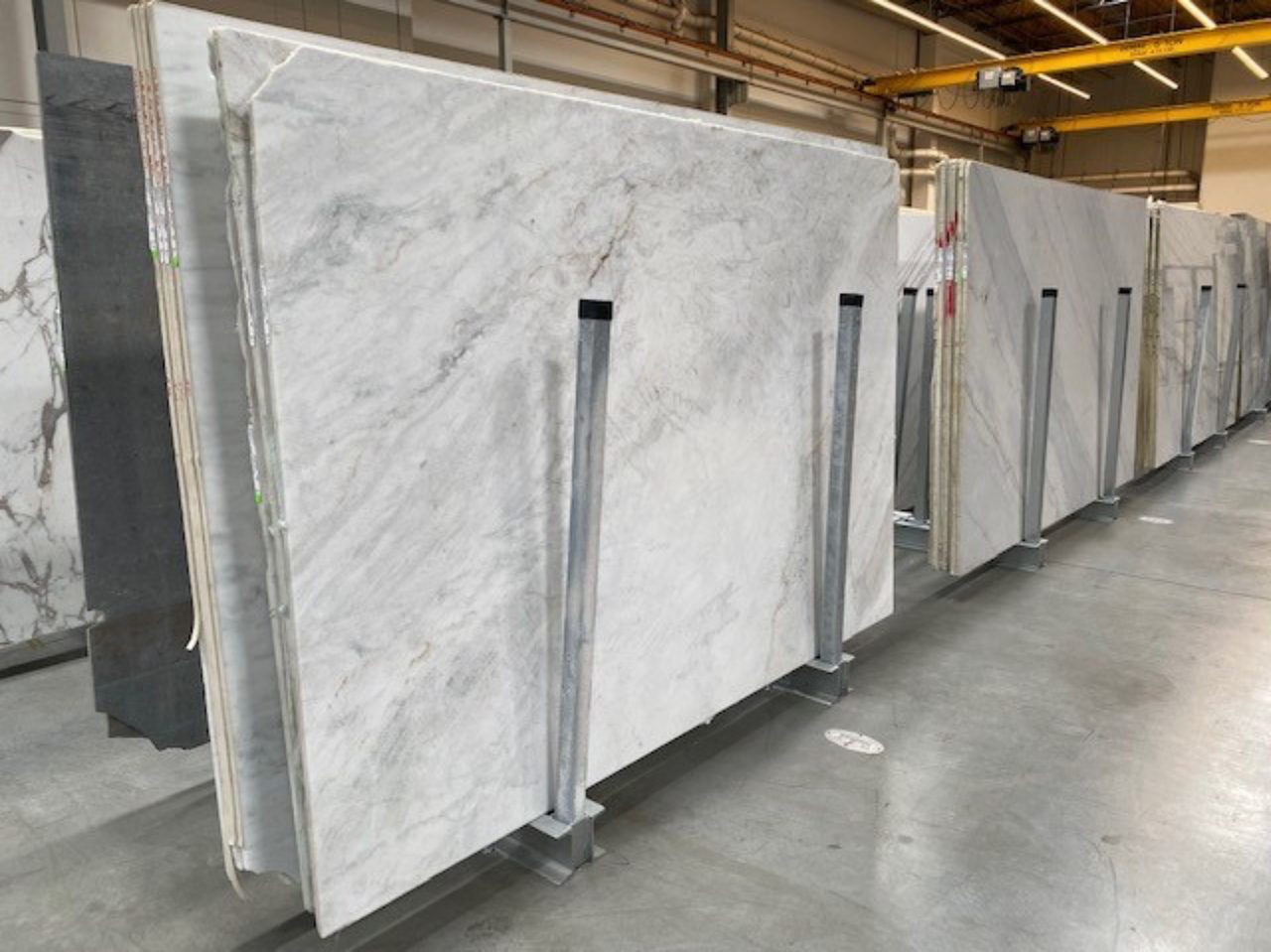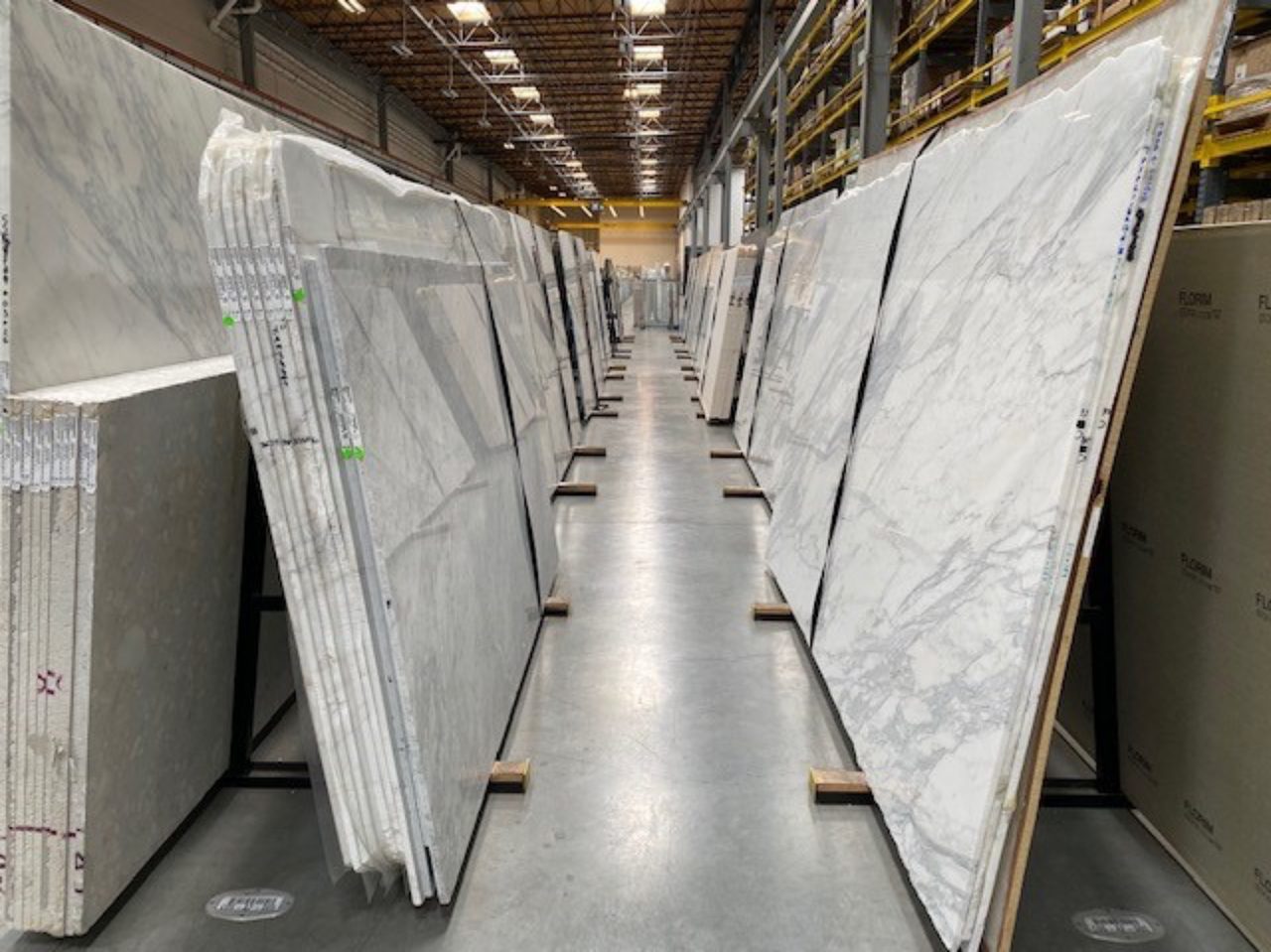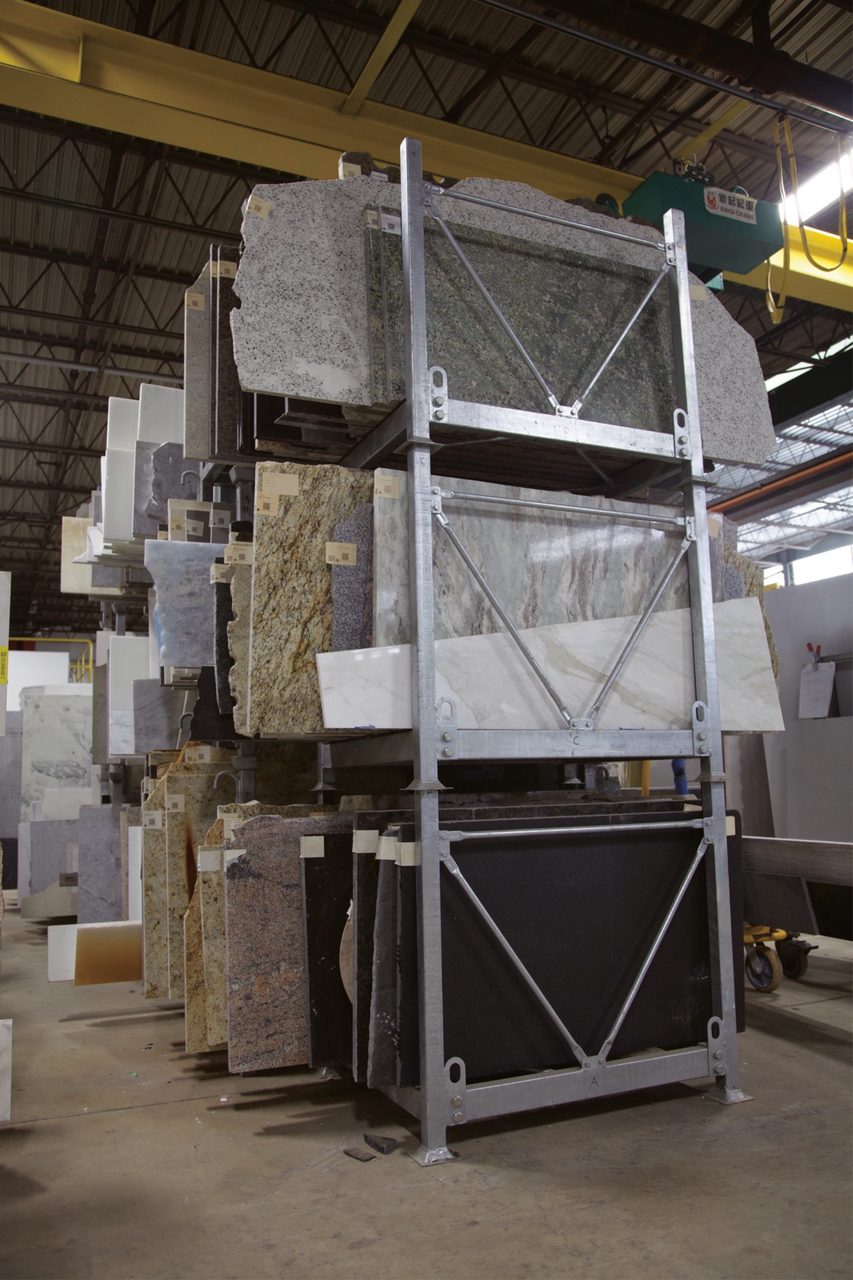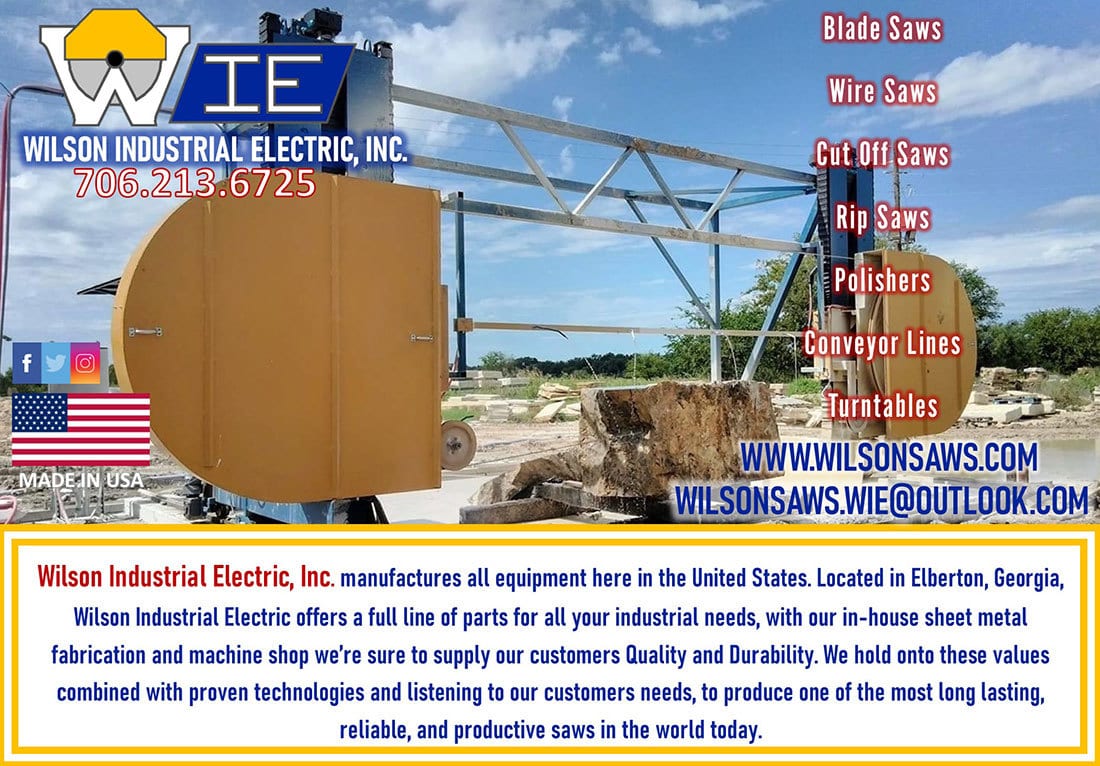Revisiting
Slab Storage
With safety in the shop being crucial for both employees and customers, learn more about the different products available to store slabs properly
by Jonathan Mitnick
Secure A-frame in use on existing A-frames at Olympia Stone, Toronto, Canada. Photo courtesy of Olympia Stone, Toronto, Canada.
The best stone companies are the ones that safely handle and store their materials. For those of us who sell stone, we know that is a big deal because the products we work with every day are heavy and dangerous. That’s why the safety of workers and visitors should always be the top priority. And a good place to start is with storage. Fortunately, there are proven methods that exist to help business owners safely store their materials. Since each company is unique, storage and handling procedures may vary to suit its specific needs.
The two proven methods to store slabs are A-frames and slab pole racks (aka bundle rails). Both are well-known systems, historically tried and true, and although there are many variations, the basic functions haven’t changed much over time. Each offers potential benefits or drawbacks, depending on the needs of the user.
Steel A-frames
When it comes to slab storage, the use of a steel A-frame is the most popular choice among stone distributors. It’s important to note that A-frames should be made of steel and that wood A-frames should never be used to store slabs of stone.
The average steel A-frame can hold up to 40 large slabs of 2cm granite or marble in an area of about 60 square feet. It offers ease of use for the worker to load and unload, as well as a comfortable view of the exposed slabs to customers and visitors. However, viewing slabs in the fall shadow can be a concern, so securing the slab to the frame is suggested. Another possible disadvantage of A-frames is that slabs in front must be moved out of the way in order to get to slabs behind them. In spite of any drawbacks, a steel A-frame is a reliable method that is safe and effective when used properly.
Strapping slabs to the A-frame is a growing practice among a number of stone suppliers to help them overcome fall shadow concerns. Visitors to Walker Zanger’s Los Angeles, CA, warehouse can view beautiful stone slabs on A-frames safely and easily. Steel A-frames line up evenly with slabs held in place with nylon ratchet straps to prevent unintended slab movement. Carefully trimmed wood properly fits to the C channel, allowing the slabs to rest correctly on the foot of the frame. Wood blocking that is cut to the correct size not only provides stable support for the slabs, but also eliminates a potential trip hazard to unsuspecting workers and visitors. The straps prevent tipping and keep visitors safe when they enter the fall shadow. Importers like Bedrosians also use ratchet straps to secure slabs at their facilities.
The Secure A-Frame is a creative way to hold slabs in place without using nylon ratchet straps. Introduced in 2012 by Groves, Inc., the Secure A-frame is a slab storage device that fits most existing A-frames. Read more here.
Olympia Stone in Toronto created a safe and functional slab viewing environment in their warehouse by using the Secure A-frame. The arm keeps slabs tight to the frame while visitors pass through the fall showdown in safety. Authorized workers may easily lift the safety arm to move the slabs. The post stays in place to offer additional protection to visitors or may be removed for loading when necessary.




Slab Pole Racks
Slab pole racks are also an effective way of storing slabs. Walker Zanger uses slab pole racks in their facilities in addition to A-frames. A slab pole rack, or bundle rail, usually holds at least 20% more material than a traditional A-frame using the same footprint. Unlike A-frames, most slabs on the pole rack may be accessed without having to move other slabs that are in front of them. These racks work best when stones are grouped by similar heights and colors. Slabs of various heights need to be adequately spaced apart for access with a slab lifter.
Storing materials in a shop is much different than storing slabs at a distributor’s warehouse.
Finished pieces get staged temporarily for installation, but the cut offs and remnants accumulate rapidly. Colors, thicknesses and sizes vary greatly, making storage and viewing difficult and dangerous. Using an A-frame to store remnants is impractical. That’s why many stone fabricators store their remnants on a pole rack system.
But a small shop doesn’t always have the space to store remnants on a pole rack comfortably. Occasionally the pieces get damaged from handling, or the rack gets overloaded with mixed materials that are difficult to view and hard to retrieve. Groves, Inc. introduced the stacking box at The International Surface Event (TISE) 2022 to address the growing need to manage remnant stock. Remnants up to 30 x 100 may be stored safely in movable, stackable, steel boxes. Fabricators with limited floor space now have a solution if they want to hold on to their remnants.
Stone accidents from poorly stored or mishandled slabs can be avoided. Injuries not only happen to employees, but may affect customers, truckers and innocent bystanders too. Promoting safety awareness to employees and using the proper equipment are the first line of defense against a stone accident. Proven methods of storage and handling may be found easily by visiting the Natural Stone Institute’s website.
The Natural Stone Institute offers slab handling training online to help stone companies build and maintain their own slab safety program. The suggested course bundles go beyond storage, giving users a comprehensive understanding of established slab handling practices. Read more here.
When it comes to safety, top companies research options, find solutions and implement them.
Trade shows are a great place to meet equipment manufacturers, but a trip to another stone facility is the best way to see how that equipment is being used in real time. Observe how others incorporate A-frames and slab racks into their operations. Make notes, take a few photos and don’t be afraid to ask questions. Always discuss new ideas with your company and welcome your employees’ feedback. Sharing information and experiences with your staff and colleagues is a useful tool when developing an effective storage and handling program.
Jonathan Mitnick is a Partner at CCS Stone, Inc., New Jersey’s first and only NSI Accredited fabricator. He is also president of Mitnick Stone, Inc., a stone consulting and advisory firm. Mitnick currently serves on the Board of Directors for the Natural Stone Institute and is past Chairman of the NSI Safety Committee. He may be reached at jonathan@ccsstone.com.
